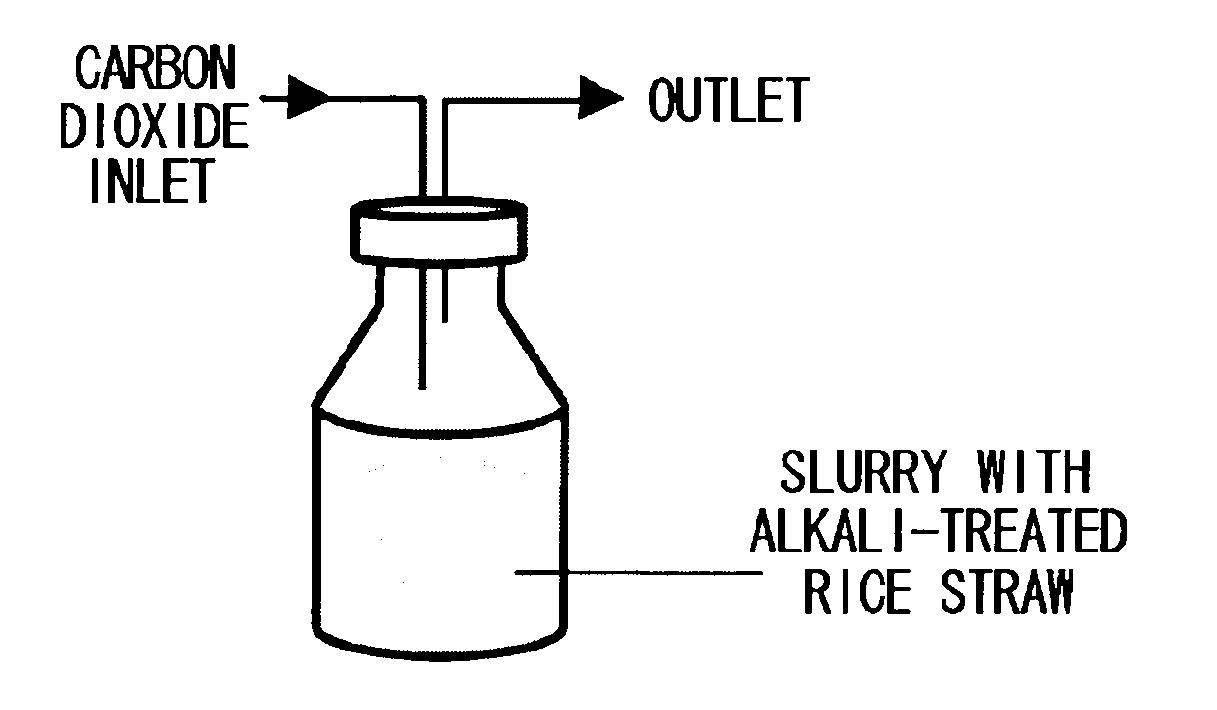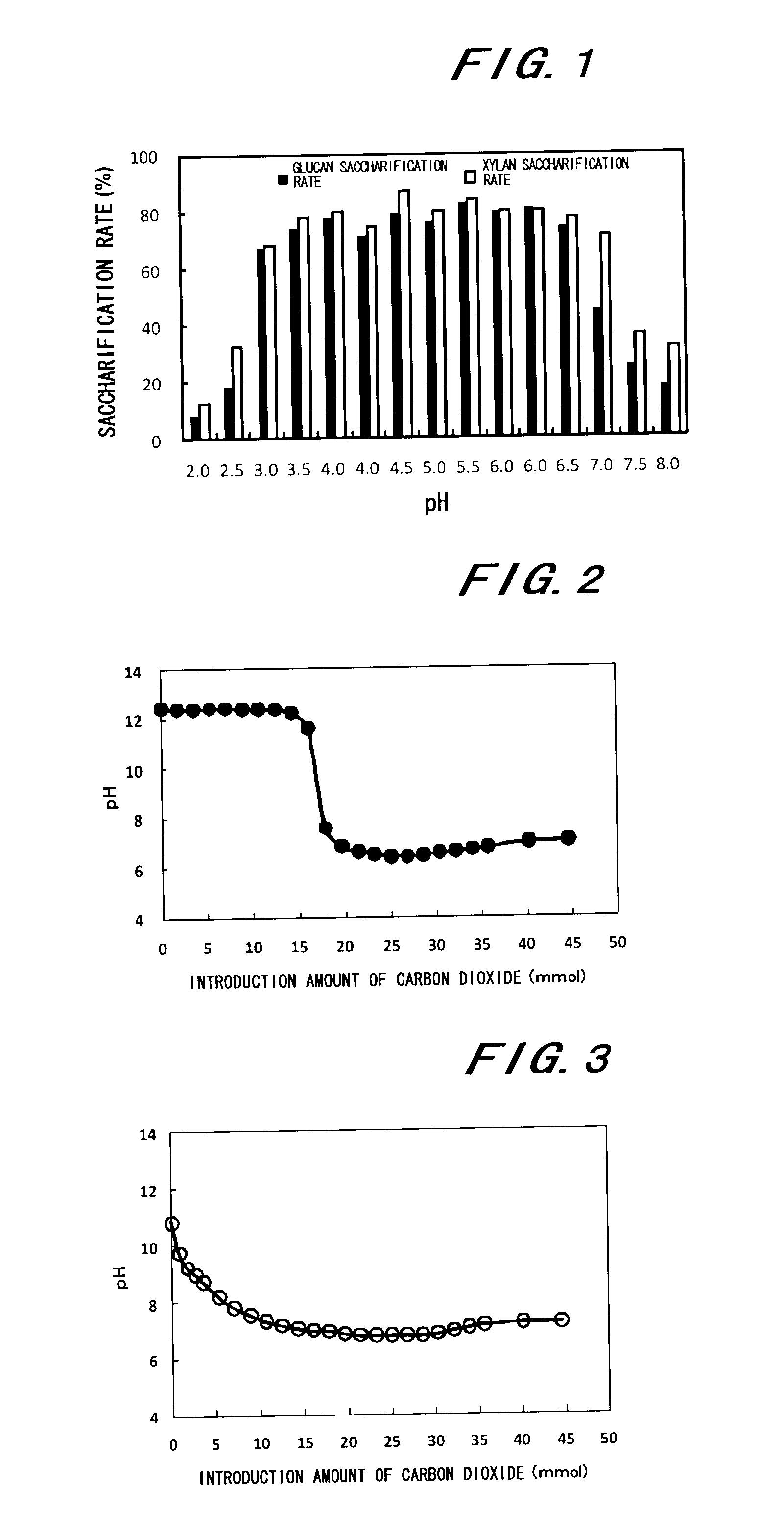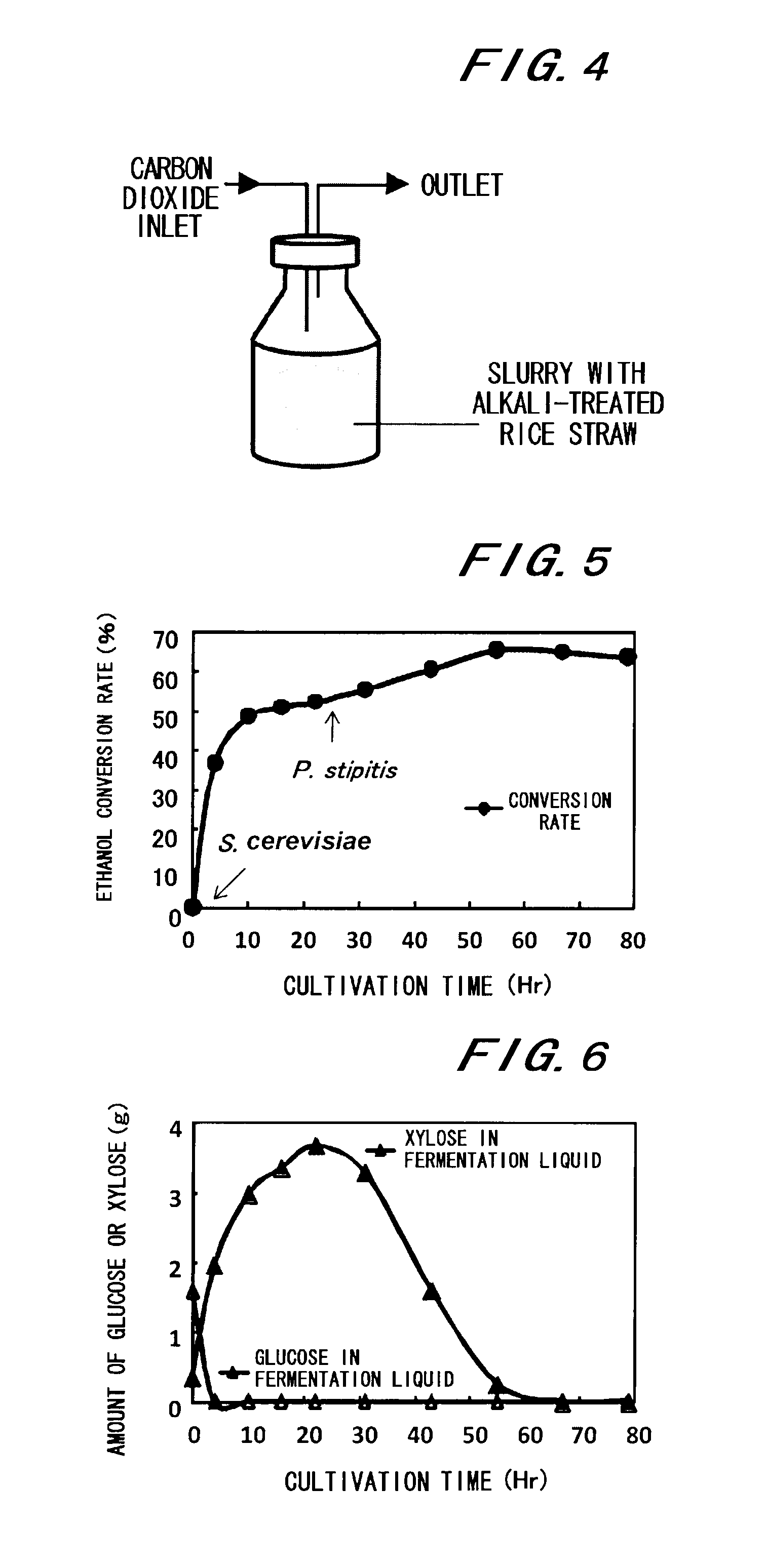Method for converting lignocellulosic biomass
- Summary
- Abstract
- Description
- Claims
- Application Information
AI Technical Summary
Benefits of technology
Problems solved by technology
Method used
Image
Examples
preparation example 1
Preparation of Lignocellulosic Biomass Feedstock
[0131]In the following experiment examples and examples, the lignocellulosic biomass feedstock used as the biomass feedstock includes rice straw (variety name: Koshihikari, Leaf Star), barley straw (variety name: Silky Snow), sugarcane bagasse (available from a sugar factory in Japan), sorghum bagasse (variety name: SIL-05), and sugarcane (variety name: Nif8).
[0132]Each biomass feedstock was prepared as a powder by drying the material at 65° C. so as to have a water content of 5% or less and pulverizing the dried material so as to have a particle size of 1 mm or less.
Measurement Example 1
(1) Contents and Saccharification Rates of Various Carbohydrates
A. Measurement of Glucose Content and Xylose Content
[0133]The lignocellulosic biomass powder (rice straw, sugarcane, barley straw, sorghum, or sugarcane bagasse) or the powder after the alkali treatment was weighed in an amount of 100 mg and subjected to a two-step sulfuric acid treatment ...
example 1
Neutralization with Carbon Dioxide in Open System after Treatment of Rice Straw with Calcium Hydroxide
[0174]The efficiency of neutralization with carbon dioxide in an open system was determined using a rice straw suspension subjected to an alkali treatment with calcium hydroxide.
[0175]First, 100 mL of a calcium hydroxide suspension (1% (w / v), 13.5 mmol, corresponding to 10% per dry weight of rice straw) and rice straw powder (variety name: Koshihikari, 10 g) were added to a 200 mL glass beaker, and the slurry was homogenized by stirring at room temperature. Then, a treatment with calcium hydroxide (alkali treatment) was conducted at 120° C. for 1 hour using a high-temperature and high-pressure sterilizer (KS-323, Tomy), and the slurry was cooled at room temperature.
[0176]After that, a carbon dioxide gas was introduced into the slurry at a flow rate of 20 mL per minute (0.9 mmol / min), and a pH variation was measured with time using a pH meter. Further, at the time of 32 minutes when ...
example 2
Neutralization with Carbon Dioxide in Closed System after Treatment of Rice Straw with Calcium Hydroxide
[0180]The ability of neutralization with carbon dioxide in a closed system was determined using a rice straw suspension subjected to an alkali treatment with calcium hydroxide.
[0181]First, 4 mL of each of calcium hydroxide suspensions with different concentrations (0, 0.1, 0.5, 1.0, 2.0, and 4.0% (w / v) corresponding to 0, 2, 10, 20, 40, and 80% (w / w) per dry weight of rice straw) and rice straw powder (variety name: Koshihikari, 200 mg) were added to a 10 mL vial bottle (No. 3, Maruemu Corporation). The vial bottle was sealed with a butyl rubber stopper and an aluminum cap, and the slurry was homogenized by stirring. Then, a treatment with calcium hydroxide (alkali treatment) was conducted at 120° C. for 1 hour using a high-temperature and high-pressure sterilizer, and the slurry was cooled at room temperature.
[0182]It should be noted that, the pH measurement after each treatment ...
PUM
| Property | Measurement | Unit |
|---|---|---|
| Temperature | aaaaa | aaaaa |
| Temperature | aaaaa | aaaaa |
| Temperature | aaaaa | aaaaa |
Abstract
Description
Claims
Application Information
 Login to View More
Login to View More - R&D
- Intellectual Property
- Life Sciences
- Materials
- Tech Scout
- Unparalleled Data Quality
- Higher Quality Content
- 60% Fewer Hallucinations
Browse by: Latest US Patents, China's latest patents, Technical Efficacy Thesaurus, Application Domain, Technology Topic, Popular Technical Reports.
© 2025 PatSnap. All rights reserved.Legal|Privacy policy|Modern Slavery Act Transparency Statement|Sitemap|About US| Contact US: help@patsnap.com



